

We may earn revenue from the products available on this page and participate in affiliate programs. Learn More ›
A hummingbird hovering to sip from a flower or hummingbird feeder is an incredible sight, and it’s only natural to wish to learn more about these avian heroes’ tiny bodies and fast-moving wings. For instance, did you know that ruby-throated hummingbirds can fly across the entire Gulf of Mexico in a single trip?
Read on to discover some interesting facts about these little marvels, from how quickly their hearts beat to how much they eat daily.
1. Rapid Heartbeats
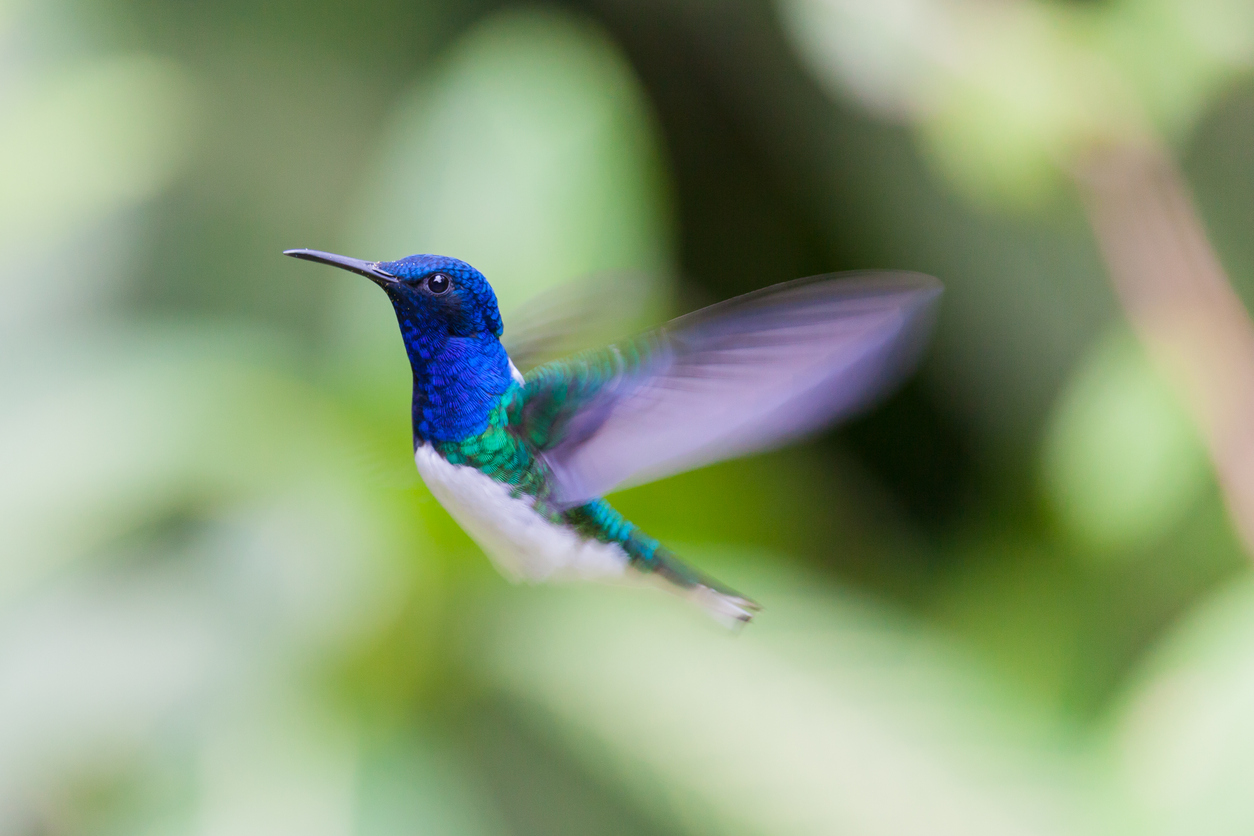
When a hummingbird is in full flight, its heart may beat up to 1,260 times per minute. This is amazingly fast, especially in comparison to the average human heart rate, which ranges between 60 and 100 beats per minute. A hummingbird’s heart doesn’t always beat this quickly, however. If they are resting, their heart rate significantly decreases to just 50 to 250 beats per minute. This state of near-hibernation, known as torpor, prevents hummingbirds from expending too much energy and allows them to rest and prepare for the next day.
2. Seeing Red?
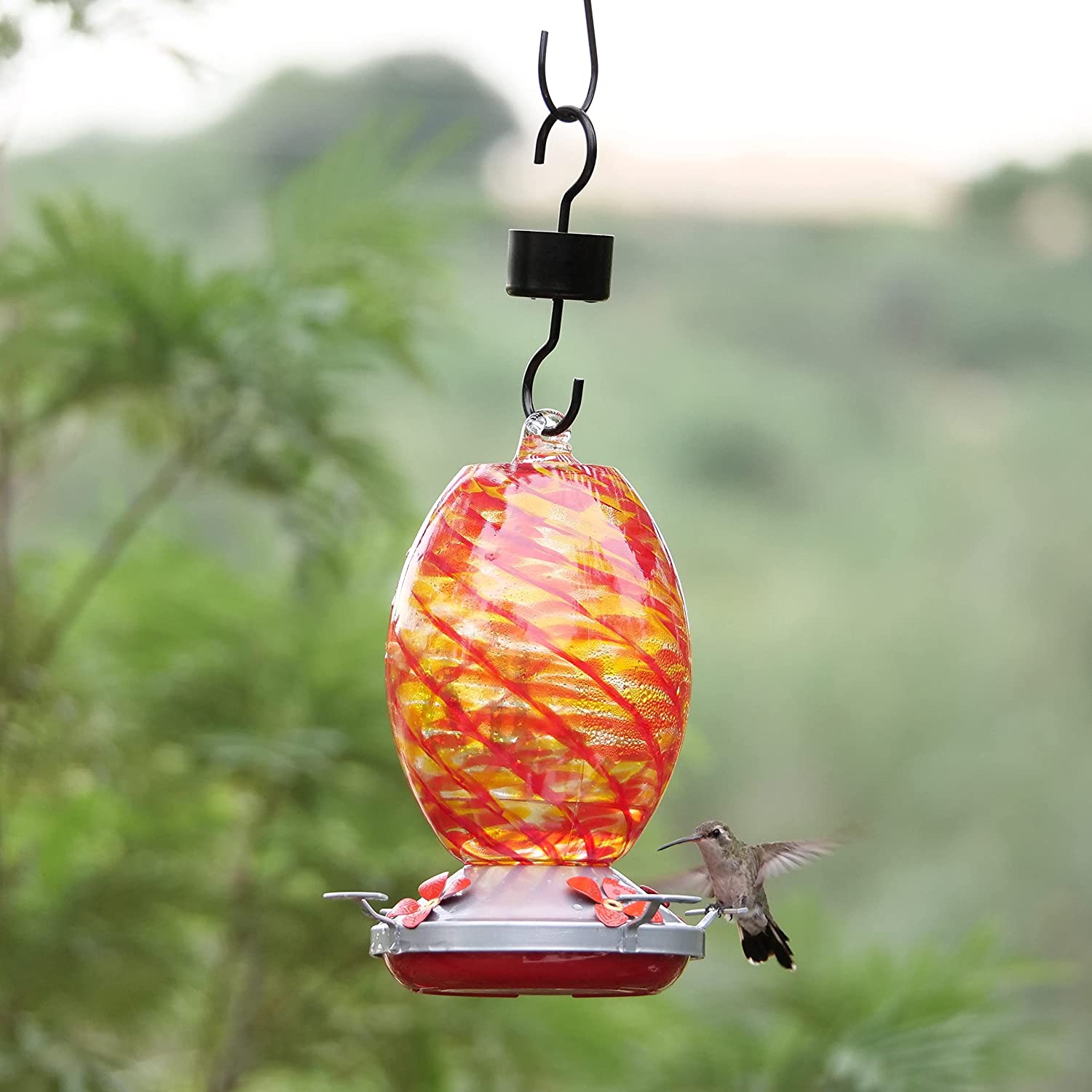
While many believe hummingbirds are attracted to the color red, that’s not necessarily the case. They feed on flowers with the highest sugar content first, and because red, orange, and yellow flowers tend to have higher sugar concentrations in their nectar, hummingbirds are commonly found near flowers of these colors. This association between hummingbirds and brightly colored flowers is why so many hummingbird feeders are red with yellow or orange accents.
RELATED: The Best Hummingbird Feeders, According to Our Testing
3. Fast Wings, Fast Speeds

When a hummingbird hovers, its wings flap around 10 to 80 times per second. The exact speed varies from one species to the next, with smaller hummingbirds moving more quickly than larger species. In flight, a hummingbird can easily reach speeds upwards of 30 miles per hour. Some male hummingbirds can increase these flying speeds significantly during their courtship dives, reaching closer to 60 miles per hour.
4. Bugs for Protein
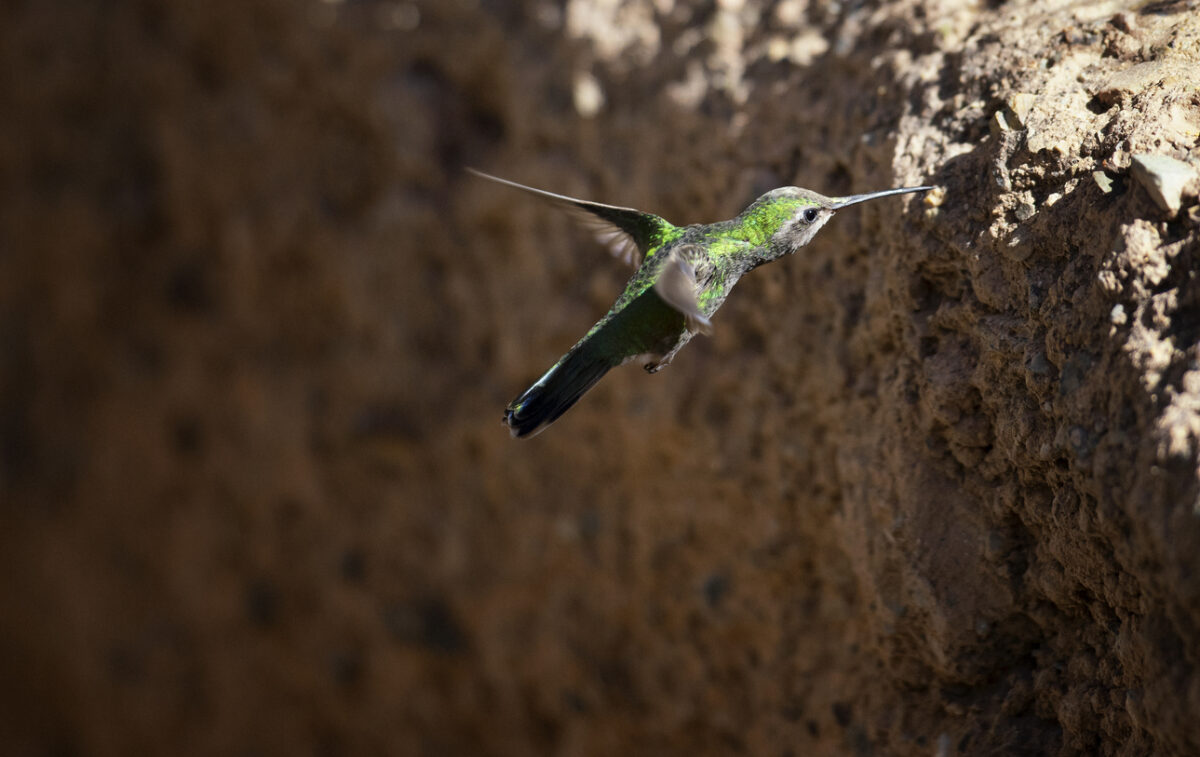
You probably already know that hummingbirds eat sugar water from feeders and nectar from flowers, but did you know that they also need a protein source in their diet? When they’re not drinking sweet nectar or water, you can find hummingbirds snacking on mosquitoes, gnats, and other small insects—even spiders!
5. Fancy Flying
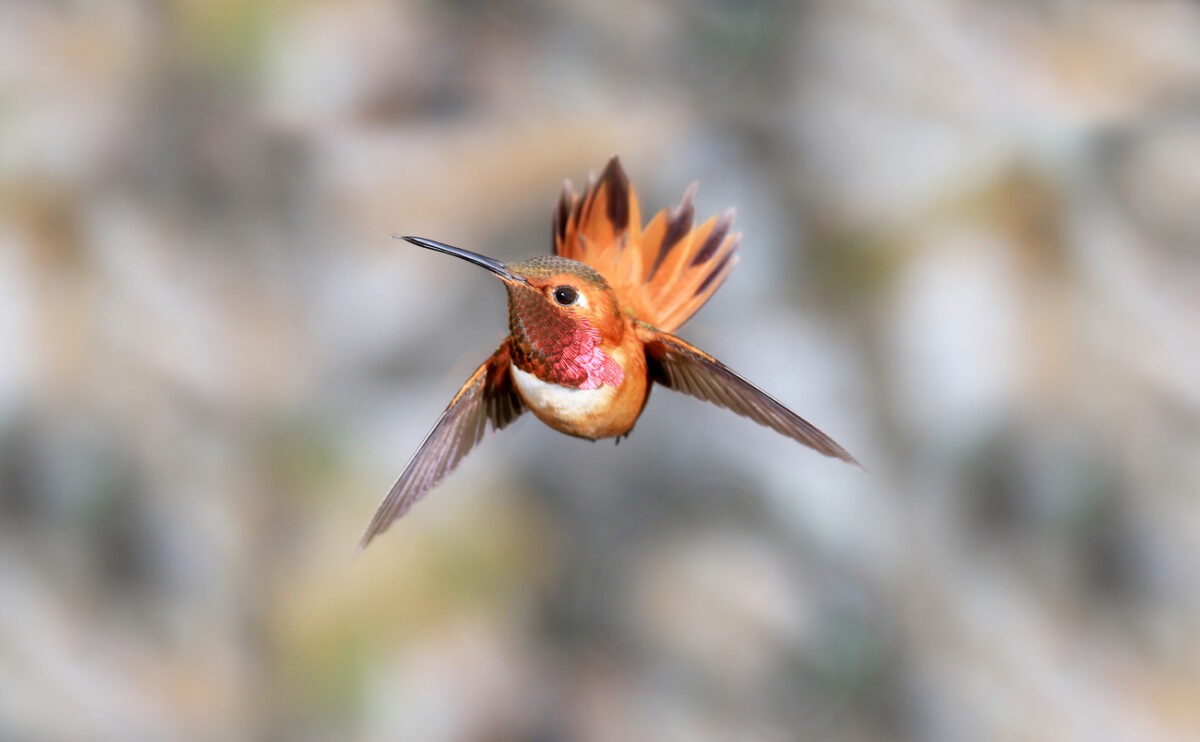
Hummingbirds routinely display some impressive flying skills. Their wings rapidly move in a figure-eight pattern as they fly, which gives them greater control of their movements. This is how they hover in place to sip nectar with ease. Hummingbirds can even fly backwards, something no other bird species can do. A hummingbird might even fly upside down for short periods if a situation calls for it.
6. American Habitat

Hummingbirds can be found across North and South America, but they do not live on other continents. There are more than 300 hummingbird species, although only a few live in the United States. Eight hummingbird species reside within the U.S., and around 20 more may visit from time to time.
7. Frequent Flyer Miles
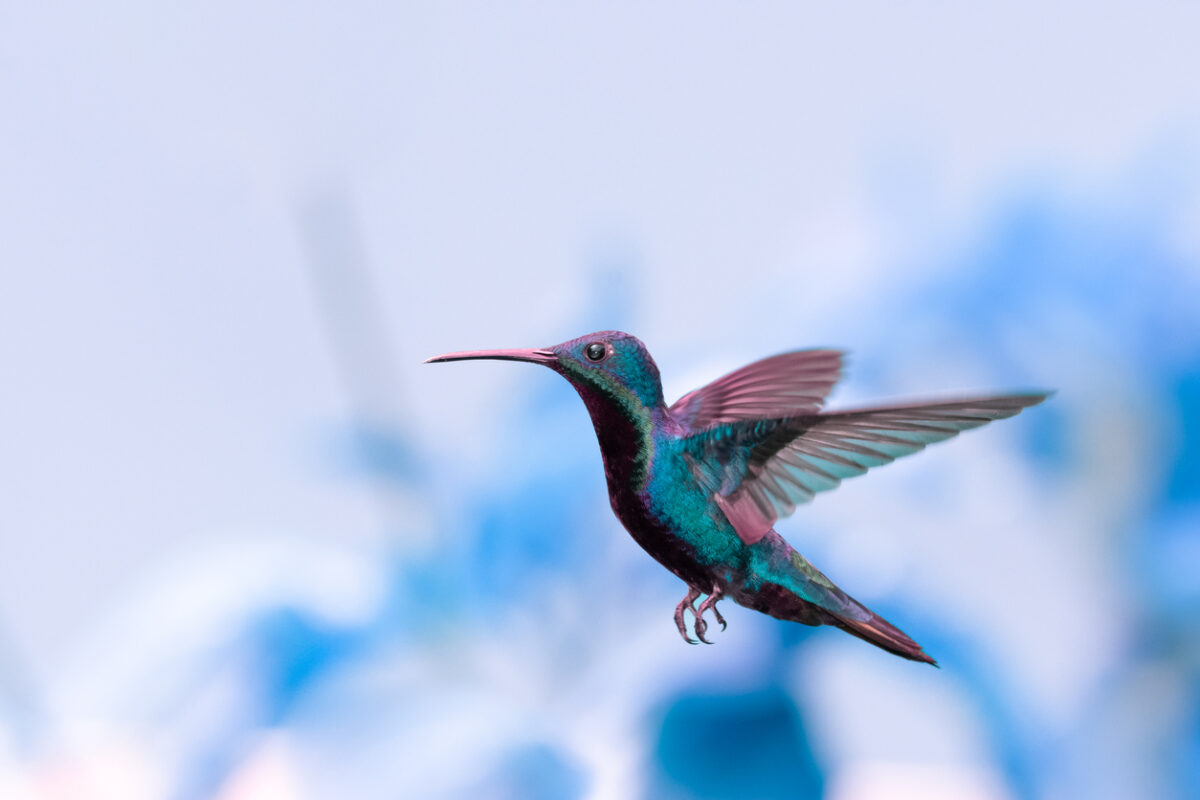
Hummingbirds prefer warmer weather, so while they can be found in most parts of North America in temperate seasons, most migrate to warmer climates in the winter. These small birds can travel thousands of miles in search of balmier temperatures. The rufous hummingbird makes the longest trek, traveling more than 3,000 miles from Alaska or Canada to its winter retreat in Mexico. A testament to their endurance and instincts, ruby-throated hummingbirds fly 500 miles across the Gulf of Mexico without stopping to reach their destination.
8. No “Bird Brains” Here

Birds aren’t often considered to be the smartest of animals, but hummingbirds are an exception to the rule. A hummingbird’s brain makes up an astonishing four percent of its body weight, greater than any other bird species. For comparison, the average human brain only accounts for two percent of total body weight. Hummingbirds use their impressive memories to revisit areas of high food supply from past years.
9. Flower Fanatics

Hummingbirds are almost constantly flying and moving. This high activity level means they burn a lot of energy, which must in turn be replenished by a lot of food. Each day, a hummingbird can consume up to three times its weight in insects, nectar, and other plant sources. A single hummingbird may drink from as many as 100 flowers per day. Depending on its size, it may consume up to 2 fluid ounces of nectar and/or sugar water daily.
RELATED: 6 Surefire Ways to Attract Hummingbirds to Your Yard
10. Teeny Tiny

Hummingbirds are very tiny. In fact, even the largest hummingbird species, the giant hummingbird, weighs less than an ounce (0.7 ounces). Of the smaller species, the bee hummingbird is the littlest, weighing in at about 0.06 ounces—lighter than a business card!
11. Iridescent and Colorful

You may have noticed the vibrant, shimmering patch of color on a male hummingbird’s neck. Known as a gorget, this physical feature varies in color depending on species. Hummingbirds’ brilliant iridescence comes from air-bubble-packed structures in their feather cells, which reflect light in complicated ways to create the gorgeous colors we see.
12. Hang With the Hummers

If you’d like to see these fascinating creatures up close, there are a number of hummingbird gardens and sanctuaries in the U.S. A couple of the most noteworthy include the Tohono Chul botanical garden in Tucson, Arizona, with its collection of desert honeysuckle, salvia, and desert willow, and Bandelier National Monument in Los Alamos, New Mexico, where black-chinned, broad-tailed, calliope, and rufous hummingbirds can be seen at certain times of year.
